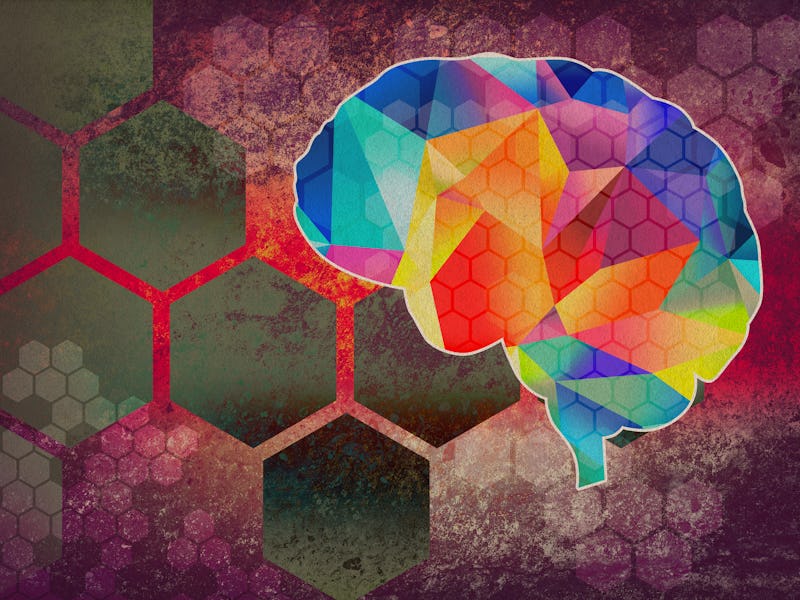Scientists discover how the brain grows and shrinks as you age for the first time
The brain charts can constantly be updated, expanded and refined.

For decades, growth charts have been used by pediatricians as reference tools. The charts allow health professionals to plot and measure a child’s height and weight from birth to young adulthood. The percentile scores they provide, especially across multiple visits, help doctors screen for conditions such as obesity or inadequate growth, which fall at the extremes of these scores.
Meanwhile, it is possible to measure brain development with imaging technologies such as ultrasound, magnetic resonance imaging (MRI), and computerized tomography (CT). The development of these technologies has led to a wealth of research on how the brain changes, and each year, millions of clinical brain scans are performed worldwide. Despite this progress, there are few measures that are used to aid in monitoring brain development. Why?
In contrast to traditional growth charts, quantifying brain development and aging comes with a host of technical obstacles. Simply put, there is no tape measure for the brain. This makes it difficult to standardize measures across different studies. The costs and complexity of acquiring brain scans mean the data available to generate reference charts for a single study is limited.
We sought to address this by stitching together data across the largest possible combination of existing studies. We contacted many researchers to see if they would be willing to contribute to these reference charts.
As evident from our large dataset, these requests were met with overwhelming enthusiasm. This turned a grassroots project into a collaborative global effort spanning six continents and dozens of institutions, the results of which have just been reported in the journal Nature.
Milestones
The vast amount of data we combined allowed us to establish a set of reference charts for a number of brain features across the lifespan. This enabled us to precisely map the timing of milestones in brain development and aging. These included:
- The volume of grey matter (brain cells) increases rapidly from mid-gestation onwards, peaking just before we are six years old. It then begins to decrease slowly.
- The volume of white matter (brain connections) also increased rapidly from mid-gestation through early childhood and peaks just before we are 29 years old.
- The decline in white matter volume begins to accelerate after 50 years.
- Grey matter volume in the subcortex (which controls bodily functions and basic behavior) peaks in adolescence at 14 and a half years old.
Our data also contains a multitude of people with different clinical diagnoses. Because we can now see how an individual compares to others of the same age and sex, this variability allowed us to explore differences between groups of people.
As expected, for example, people with neurodegenerative conditions such as Alzheimer’s disease tended to have low scores for grey and white matter volume — the most abundant brain tissue types.
People with Alzheimer’s tended to have less grey and white matter.
Beyond group-level comparisons, these reference charts will enable future research to benchmark individuals in relation to a population. We hope this will result in individually tailored and relevant measurements.
This progress is particularly important in the context of mental illness, that is, people may share a diagnostic label despite differences in their symptoms and, perhaps, in what is causing their condition. Ultimately, doctors have to treat individuals, not groups, so they need instruments that provide personalized information.
Enormous collaborative effort
Although phrases like “big data” or “open science” apply to our study, they can gloss over some of the nuances of the collaborative processes that enabled this project. Specifically, some datasets require substantial legal support for data to be shared between institutions, while others can be shared and downloaded from a public website.
Similarly, some researchers have substantial expertise or work at institutions that receive funding to help organize their data into easy-to-use, open resources.
For others, however, sharing data can be a time and resource-draining process. Perhaps most critically, there are many possible places to share brain scans, each of which requires different levels of curation. All of this translates into a large burden on the user when attempting to aggregate multiple datasets.
Some consortiums could not participate in our project because of disproportionate authorship requirements or stipulations about what could and could not be studied with their data. These are important considerations as we, as academic researchers, push toward a more open and collaborative science.
This work would not be possible without the collective team spirit from our existing contributors and members of the scientific community around us.
The future
There is still much work to be done before these brain charts can be used as reference tools by healthcare professionals. The underlying dataset contains both ongoing studies, and those that were started as early as 1990 when MRI machines were in a select few places in the world. So the brain charts can constantly be updated, expanded, and refined.
As larger datasets become more of the norm, we hope to continue to make our reference charts more inclusive and representative. As brain scanning becomes cheaper and increasingly accessible (even portable), we hope our brain charts will enable more quantitative standards and aid neuroscientific discoveries to parallel these exciting technological advances.
One day, if brain scanning becomes a normal part of pediatric practice, we hope to be ready with the necessary methods and tools to provide meaningful insights for patients and their families.
This article was originally published on The Conversation by Richard Bethlehem at the University of Cambridge and Jakob Seidlitz at the University of Pennsylvania. Read the original article here.